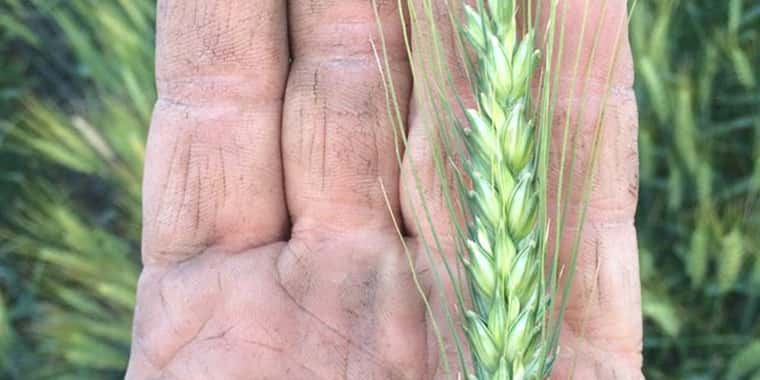While the crop is a little late, North Dakota's spring wheat looks great.
OMAHA (DTN) — Scouts on the Wheat Quality Council's Hard Red Spring Wheat Tour estimated the average North Dakota wheat yield at a record 48 bushels per acre compared to 44.8 bpa last year.
That estimate includes spring, winter and durum wheat.
“I think it's going to be excellent, and we're really pleased,” said Dan Wogsland, executive director of the North Dakota Grain Growers. Overall, scouts saw a wheat crop with record yield potential and little disease or pest pressure.
The biggest concern is the lateness of the crop. Scouts estimated the spring wheat crop is four to six weeks from harvest.
Millers, bakers, farmers and traders began scouting the wheat crops from Fargo, N.D., to Bismarck, N.D., on Tuesday, the first day of scouting. They travelled from Bismarck N.D., to Devils Lake, N.D., on the second day and from Devils Lake to Fargo on the third day.
The average spring wheat yield for the state came in at a record 48.6 bpa, compared to 44.9 bpa last year. Scouts sampled 373 fields total. The day one average yield from fields in southern North Dakota was 48.3 bpa; the second day averaged 48.4 bpa; and the third day averaged 49.4 bpa.
The average winter wheat yield was 44 bpa compared to 53.5 bpa last year. Scouts sampled 13 fields. The first day's yield averaged 42.9 bpa; the second day, 45.9 bpa; and the third day, 42.3 bpa.
Durum wheat yields averaged 36.6 bpa from 17 samples. The average yield on the second day came in at 36.6 bpa and 36.7 bpa on the third day. Scouts saw no durum fields on the first day.
On Monday, the NASS rated the spring wheat crop as 82{ba1edae1e6da4446a8482f505d60d3b8e379ff6dedafe596d9ba4611a4e33a48} good to excellent, and Wogsland said NASS is spot on.
“I don't think I've ever witnessed NASS stats as good as today. When you see good to excellent at 80{ba1edae1e6da4446a8482f505d60d3b8e379ff6dedafe596d9ba4611a4e33a48}, you think to yourself 'Wow.' And I think the tour's numbers bear that out. Even on the hillsides, it didn't make a difference where you were in the field. It was just great even in the low spots.”
“I think the quality is going to be as good as the bushels. I think protein will good in the end because I think the genetics and the varieties are going to make a difference. And you take the lateness of the crop, and there's a lot of time to build up the protein as well.”
This week's rain didn't hurt, Wogsland said. “It'll help fill it and finish it out. I was a little surprised with the lateness in the eastern part of the state. But that gives us plenty of opportunity.”
The short-term weather forecasts look favorable, he said. It's not supposed to get real hot. But with four to six weeks to go until harvest, there's still plenty of time for weather issues. The lateness of the crop also carries some disease risk.
Wogsland said North Dakota farmers have become much better managers of diseases. They know scab is a perennial challenge. Scouts saw very little scab on the tour and saw several fields where the damage was reduced to one spikelet on a head because it was a more resistant variety.
“They've become more consistent with their fungicide applications,” Wogsland said. “They've got the wherewithal and the equipment to do it. We've got better crop varieties. This is the best crop we've ever seen, and I think we're going to get better in years ahead.”
© Copyright 2014 DTN/The Progressive Farmer. All rights reserved.
Photo by Ryan Davidson
Posted with DTN Permission by Haylie Shipp




